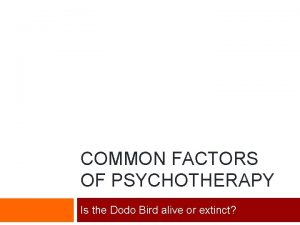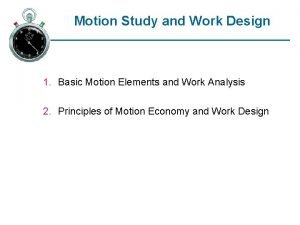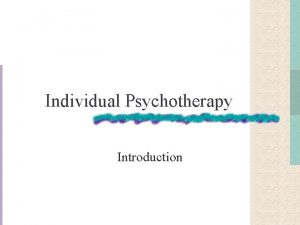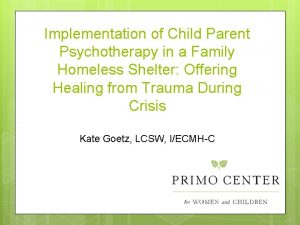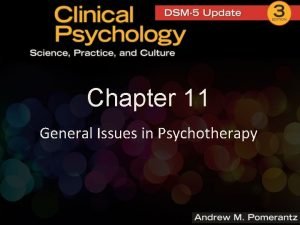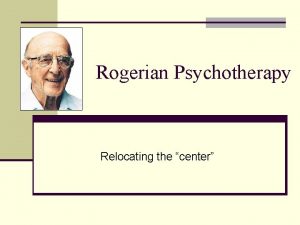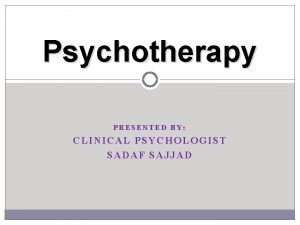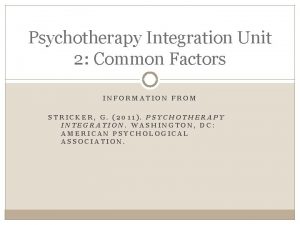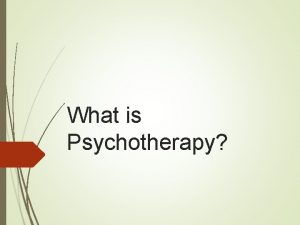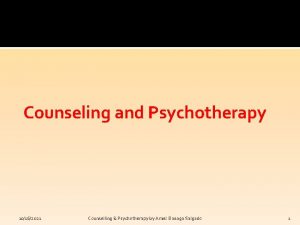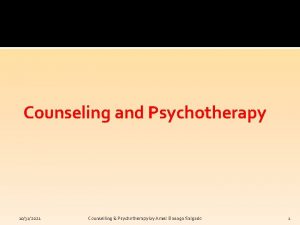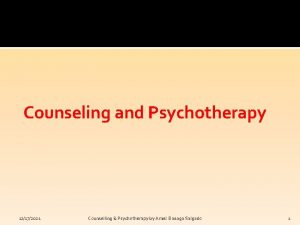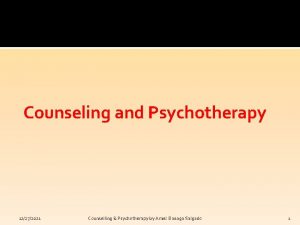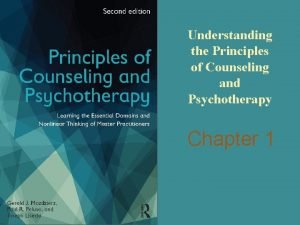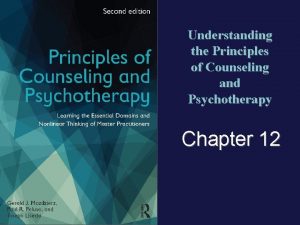Understanding the Principles of Counseling and Psychotherapy Introductio

















- Slides: 17

Understanding the Principles of Counseling and Psychotherapy Introductio n

Introduction Overview The Problem of the Sorcerer’s Apprentice Learning from Experts—Those Who Demonstrate Their Effectiveness How Do Master Clinicians Achieve Mastery? Learning to Think Like a Therapist: The Characteristics of Expert Therapist Thinking and Why It Is Important Linear versus Nonlinear Thinking Clinical Case Example: A Broken Heart and Obsessing Am I a Nonlinear Thinker? Exercising Your Nonlinear Thinking Expertise and Learning How to Think Like a Practitioner How We Will Do It: Development of Mastery and Deliberate Practice The Purpose of This Book

The Problem of the Sorcerer’s Apprentice The Story of a Novice’s search for mastery. –Steals the Master’s Hat and tries to do the magic. –FAILS miserably. –Because he does not know (think) how to do the magic.

The Problem of the Sorcerer’s Apprentice Therapists are like this, too! –Try to mimic masters. –Attempt the latest technique –FAILS miserably. –Does not know how to THINK magic.

How do Master Clinicians Achieve Mastery? • Experts reason forward from a problem, “as if cues or signposts for potential problems are embedded in the problem itself” • Find the solution embedded in the problem itself

How do Master Clinicians Achieve Mastery? • Requires knowledge collected from client experiences and therapeutic practice • Alert focus on the nuances of each client’s story, problems, resiliencies, etc.

Learning from Experts K. Anders Ericsson (2006), defined expertise as, “The characteristics, skills, and knowledge that distinguishes experts from novices and less experienced people” (p. 3).

How Are Experts Different than Non-Experts 1. Able to generate the best solution for a given situation. 2. Can detect and recognize features of a situation that novices cannot. 3. Seem to spend a lot of time analyzing a problem qualitatively.

How Are Experts Different than Non-Experts 4. Able to self-monitor and evaluate their progress more accurately. 5. Are opportunistic: making use of whatever information sources or resources are at their disposal

How Are Experts Different than Non-Experts Put simply, experts are able to achieve better results because they bring together and use many seemingly intangible resources when they work, and they appear to do it effortlessly.

How Are Experts Different than Non-Experts The same holds true for therapists

Learning from Masters Relational Domain –They possess strong relationship skills. –They believe that the foundation for therapeutic change is a strong working alliance. –They appear to be experts at using their exceptional relationship skills in therapy.

Learning To Think Like a Therapist Linear vs. Nonlinear Thinking –At the heart of a master practitioner’s work and learning how to think like a therapist – Linear Thinking: straight line from a simple problem to a simple solution –“common sense” –However, people’s perceptions may be removed from reality and make decisions based on their perceptions of reality

Learning To Think Like a Therapist Linear vs. Nonlinear Thinking –Nonlinear Thinking: thinking about things upside down and inside out – A reorientation to the way behaviors, emotions, feelings, attitudes, and so forth are viewed –When presented to a client, nonlinear interventions have a doundation of thought that is dynamic, energizing, and deeply understanding of the clients’ concerns on a profound level.

See Clinical Case Example: A Broken Heart and Obsessing, p. 6

Nonlinear Thinking and You Am I a Nonlinear Thinker? –Human beings are nonlinear thinkers with varying degrees of proficiency –Therapists often have an inherent curiosity congruent with nonlinear thinking Exercising Your Nonlinear Thinking – Exercises and puzzles throughout this textbook Expertise & Learning to Think Like a Practitioner –In learning to think like a practitioner, students will be able to move towards proficiency and later mastery in counseling

THANK YOU. Any Questions?
 What is difference between guidance and counselling
What is difference between guidance and counselling Dodo bird verdict and common factors psychotherapy
Dodo bird verdict and common factors psychotherapy Counselling psychology
Counselling psychology This is the basic motion?
This is the basic motion? Ranzcp psychotherapy written case
Ranzcp psychotherapy written case Commune psychology
Commune psychology Types of individual psychotherapy
Types of individual psychotherapy Cpp triangle of explanation
Cpp triangle of explanation Hamid zolfaghari
Hamid zolfaghari Bracketing in psychotherapy
Bracketing in psychotherapy General issues in psychotherapy
General issues in psychotherapy Who is carl rogers
Who is carl rogers Psychotherapy refers to
Psychotherapy refers to Psychotherapy definition
Psychotherapy definition Individual psychotherapy definition
Individual psychotherapy definition Quantum psychotherapy
Quantum psychotherapy Behavioral disputation
Behavioral disputation The common factors approach to psychotherapy integration:
The common factors approach to psychotherapy integration:

